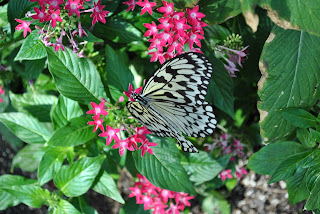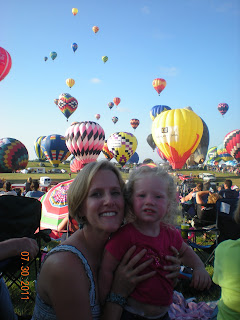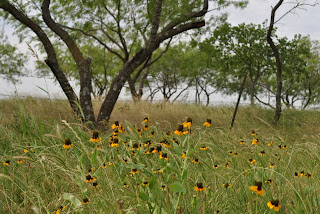****I've asked Derek to post a little something about his parents' new farm. It's a life long dream that they've recently has the pleasure to jump head first into. This might be more of a Small Cattle Operation 101 post, but I hope you will enjoy learning about the cattle side of their endeavor. Maybe I'll post more about the gardening side in the futre....
In May we made a trip to Texas to my parents new home. They recently purchased a small farm, complete with the original farm house. My parents are striving to make their farm a diversified, sustainable farm that provides some income and the country lifestyle. They have a lot of enterprises but I am only going to discuss a few here. If you want to see more about their farm you can check out their blog at
http://www.scastafarm.blogspot.com/
They have decided to add a beef enterprise to the farm and by design it has a lot of flexibility built into it. Due to the historic drought of 2011, the reduced cow herd in Texas, and increasing consumer demand and prices for beef they decided to focus on heifers. They purchased three heifers from the neighbor at weaning time in May. This happened to coincide with our trip home.
The strategy of purchasing them from the neighbor (versus from a sale barn or other source) allowed them some advantages: 1) the calves had not been commingled with other cattle reducing possible sickness/health issues, 2) the calves did not have to be shipped which reduces possible respiratory issues, 3) the calves could be fence-lined weaned which reduces stress and enhances early performance as they transition to an all grass diet (no more milk), 4) they maximized the knowledge about the animals in a way they would be unable to if they purchased them from somewhere else (they know what the sire and dams look like, they know when they were born, they know if they are adapted to the area, they know what they have had (or not had) in terms of health and management, and they had a chance to observe their disposition) and lastly, if the calves got out they would not go very far. Disposition turned out to be important as there was a fourth heifer that proved herself to be a jumper and so they avoided purchasing her at a place with really good pens, taking her home, dumping her out and never seeing her again.
Heifers are a challenge for producers to acquire in terms of financial costs and time required for development. If you retain them, you have to allow for additional grazing and you are 2 years away from any profit versus if you purchase them as replacements often times they are expensive (especially if bred). This challenge creates opportunities for people who want to specialize in raising replacements. First, weaned calves typically result in steers going for more than heifers (due to future performance) so the inital purchase can be a bit cheaper than say stocker steers. The flexibility comes into the heifer operation because you can liquidate the heifers at various stages along the way with the likelihood of recooping your investment: 1) you could graze them like a stocker calf on summer grass and sell as a heavy feeder, 2) you could carry them a bit longer and sell them as yearling replacements ready to be bred, 3) you could breed them at 12 to 14 months and sell them as breds, 4) you could breed them, calve them out and sell them as pairs or 5) you could breed them, calve them out and decide to keep them yourself as cows.

When we loaded the heifers up, we "processed" them before putting them in a weaning pen close to the house for 2 weeks. First, we gave them a visual ear tag. Second, we administered injections that protect them from a variety of problems, including: 1) Clostridial diseases like Blackleg which cause death in calves, 2) Leptospirosis which is an abortive disease and 3) IBR BVD PI3 which protects primarily agains respiratory and diarrheal problems like Red Nose (IBR) which is often associated with shipping fever but can cause reproduvtive problems in females and BVD or Bovine Viral Diarrhea. We did this in the trailer by snubbing them to the side. This is the poor boys way of working calves but Dad doesn't have pens and a chute all put together yet but that is in the works. Proper working facilities are pretty critical to any beef operation, don't have to be fancy just functional to protect both cattle and handlers. One other vaccination that is often recommended but not required is for Brucellosis but ultimately it has been eradicated and is not a major issue. It might be an advantage when selling replacements, especially if one thinks they will market them to a really wide region (out of state, out of country, etc). A booster shot is recommended down the road on the shots we gave.
The calves were put in the weaning pen for 2 weeks where they could still see, hear and smell their mothers. There was certainly some noise for several days but they settled down pretty quick. The other component to the beef operation was the purchase of a bull calf from the same neighbors. He received the same processing as the heifers but he also was castrated. He will be grazed until he reaches an ideal harvest weight and then used for beef.

Dad crossfenced the place and has two pastures. The front pasture is more of a hay meadow with a mix of bermudagrass and some cool season grasses and clovers. The back pastures is more of a range/prairie type of pasture with more warm season native grass and forbs. It has more mesquite back there. The primary grass on the back pastures is meadow dropseed which is fair for grazing and is common on high clay content soils. There are lots of interesting native forbs back there like indian blanket and upright prairie coneflower. Other cool plants found include the native grass vine mesquite and Texas bluebonnets.

My parents are also planting a large gardent with vegetables, berries and fruits. They are planning on having laying hens and the chicken house is almost done. They have tons of other plans and are having a blast. I am so proud for them right now and enjoyed being at home in May to help a little bit. The other thing we did for "fun", was to put the metal roof on the tractor shed. Scasta men think "fun" is spelled W O R K.







































